Tools Required
J 45722 Fuel Sender Lock Nut Wrench
Removal Procedure
- Remove the fuel tank. Refer to Fuel Tank Replacement .
- Refer to Plastic Collar Quick Connect Fitting Service in order to disconnect the following from the fuel tank module (2):
- Use the J 45722 and a long breaker-bar in order to unlock the fuel sender lock ring. Turn the fuel sender lock ring in a counterclockwise direction.
- Remove the cam lock ring from the fuel tank.
- Complete the following in order to remove the fuel tank module (2) from the fuel tank (4):
- Remove the fuel tank module seal (1).
- Clean the fuel module sealing surfaces.
- Place the lock ring on a flat surface. Measure the clearance between to lock ring and the flat surface using a feeler gage at 7 points.
- If the warpage is less than 0.41 mm (0.016 in), the lock ring does not require replacement.
- If the warpage is greater than 0.41 mm (0.016 in), the lock ring must be replaced.
Notice: Clean all of the following areas before performing any disconnections
in order to avoid possible contamination in the system:
• The fuel pipe connections • The hose connections • The areas surrounding the connections
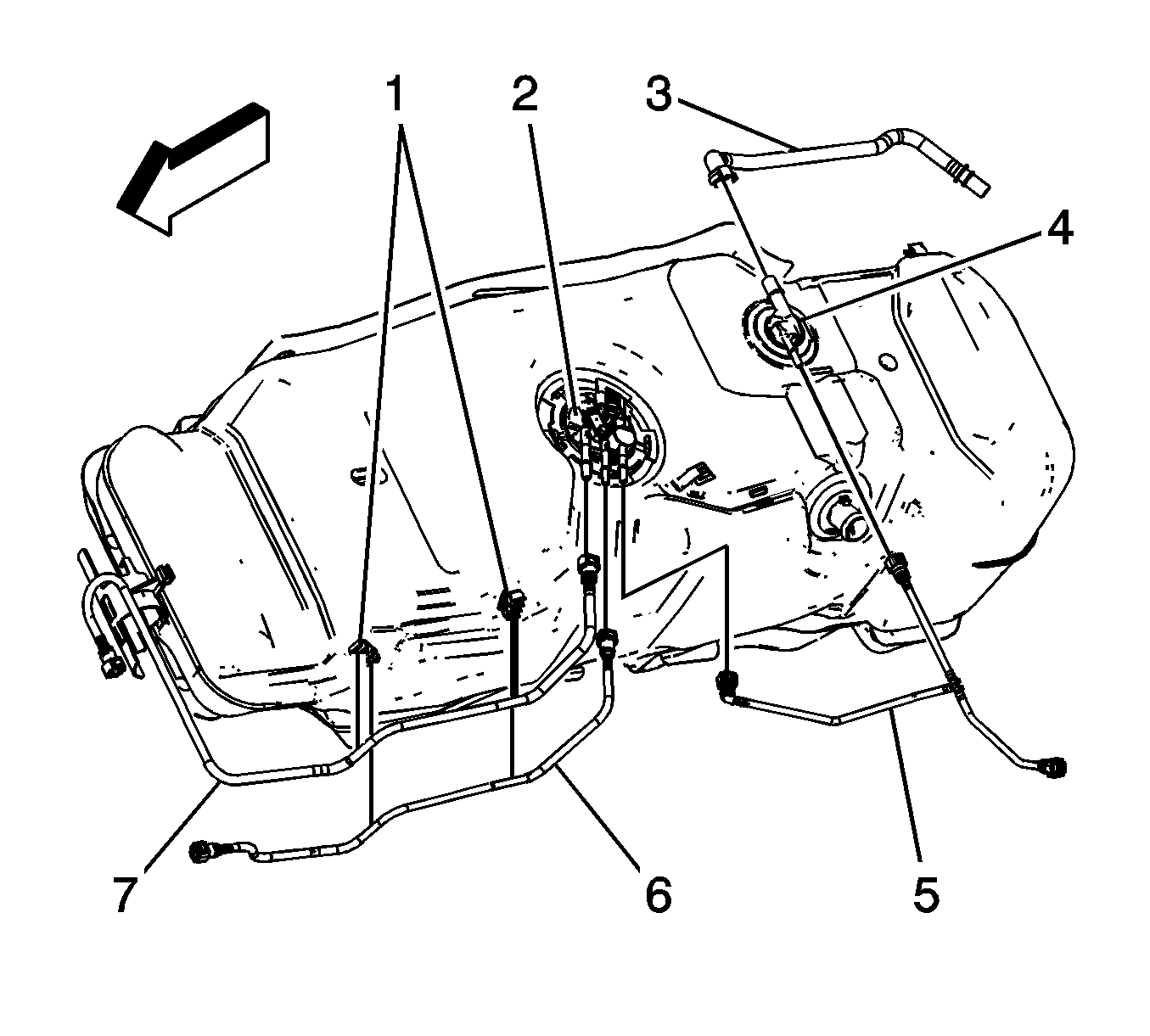
| • | The evaporative emission (EVAP) pipe (5) |
| • | The fuel return pipe (6) |
| • | The fuel feed pipe (7) |
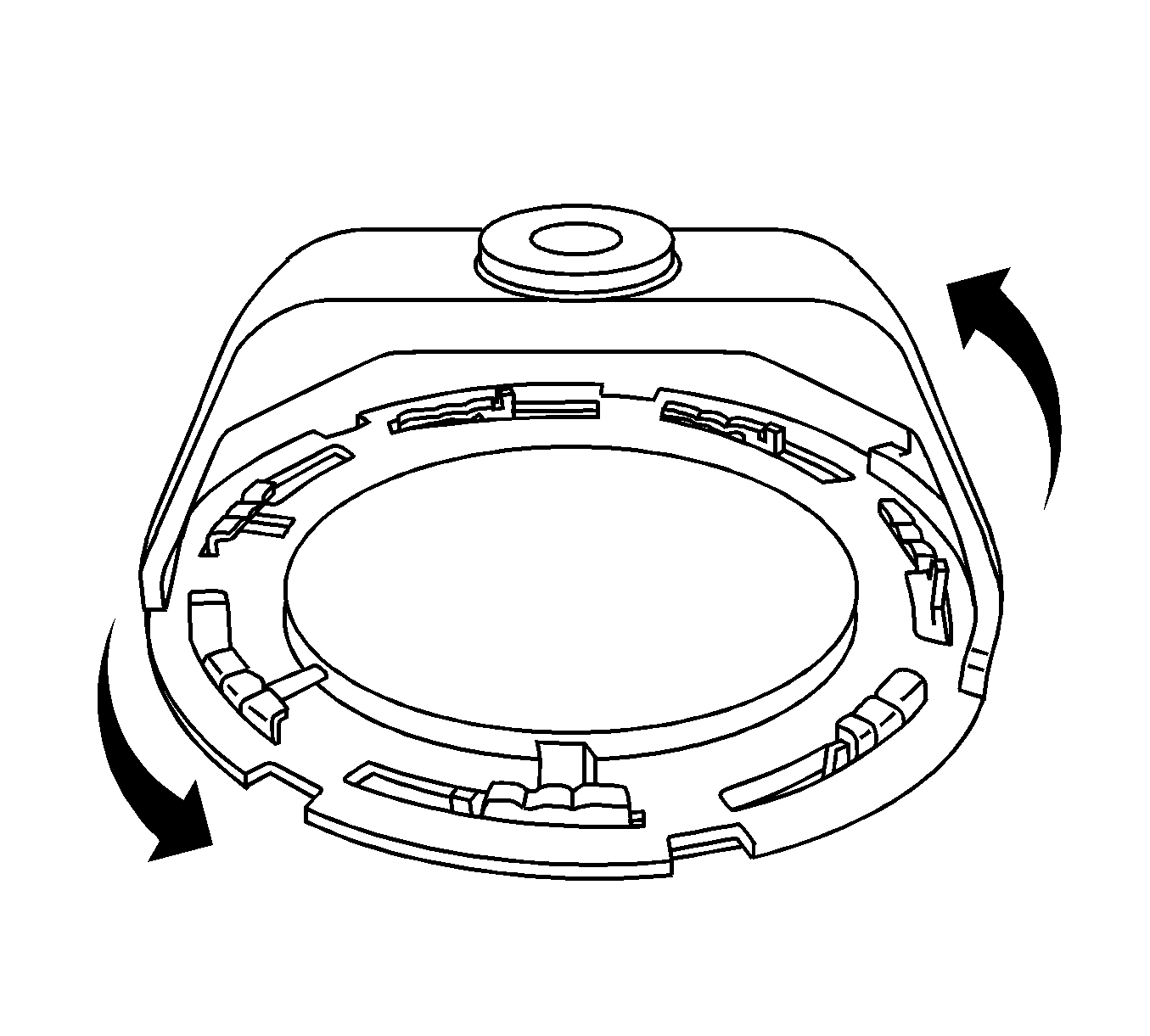
Notice: Avoid damaging the lock ring. Use only J-45722 to prevent damage to the lock ring.
Notice: Do Not handle the fuel sender assembly by the fuel pipes. The amount of leverage generated by handling the fuel pipes could damage the joints.
Important: Do NOT use impact tools. Significant force will be required to release the lock ring. The use of a hammer and screwdriver is not recommended. Secure the fuel tank in order to prevent fuel tank rotation.
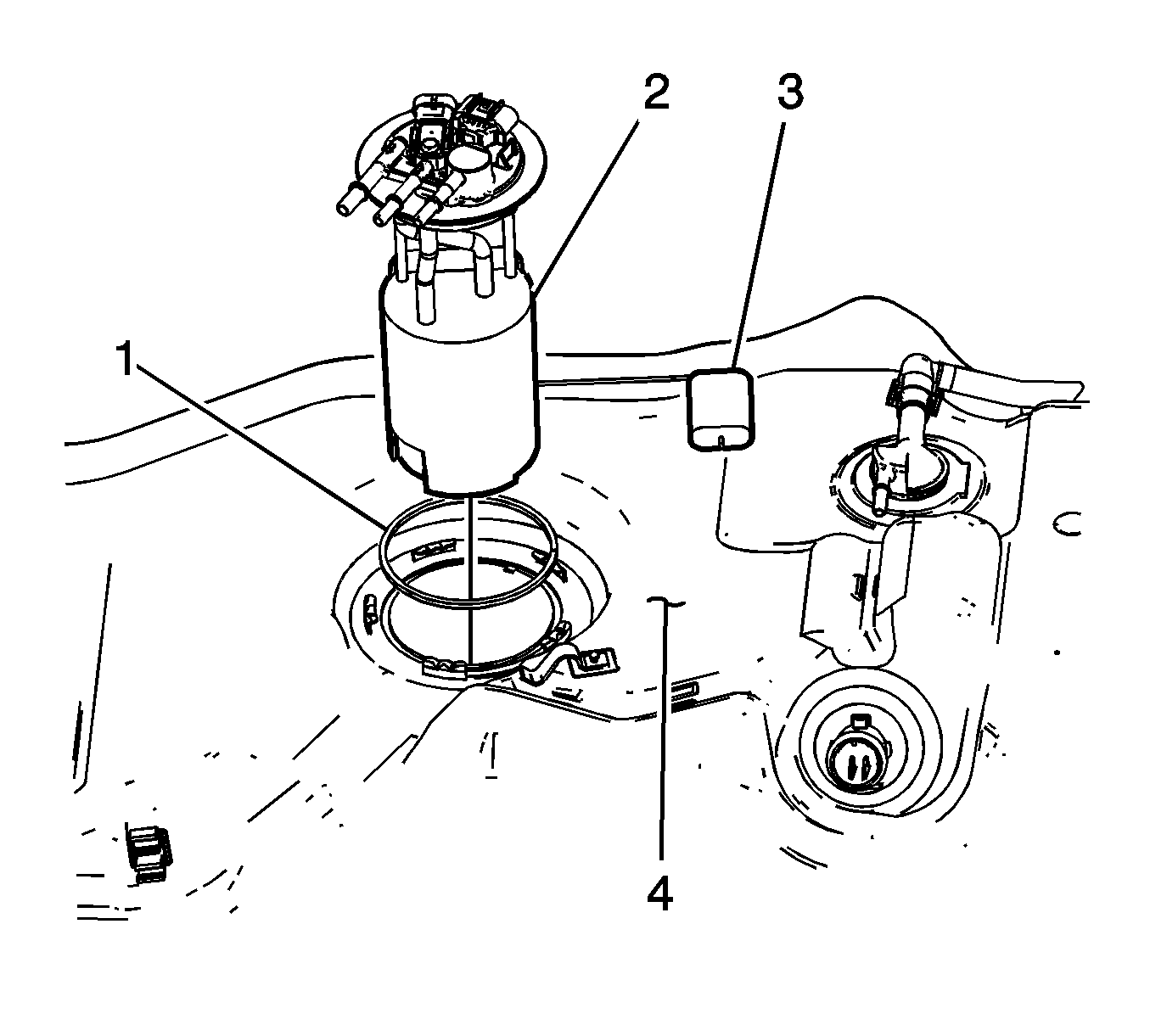
| 5.1. | Raise the module (2) upward from the fuel tank (4). |
| 5.2. | Tilt the module (2), to allow the fuel level sensor arm and float (3) to clear the fuel tank module opening. |
Do not reuse the seal (1).
Caution: Drain the fuel from the fuel sender assembly into an approved container in order to reduce the risk of fire and personal injury. Never store the fuel in an open container.
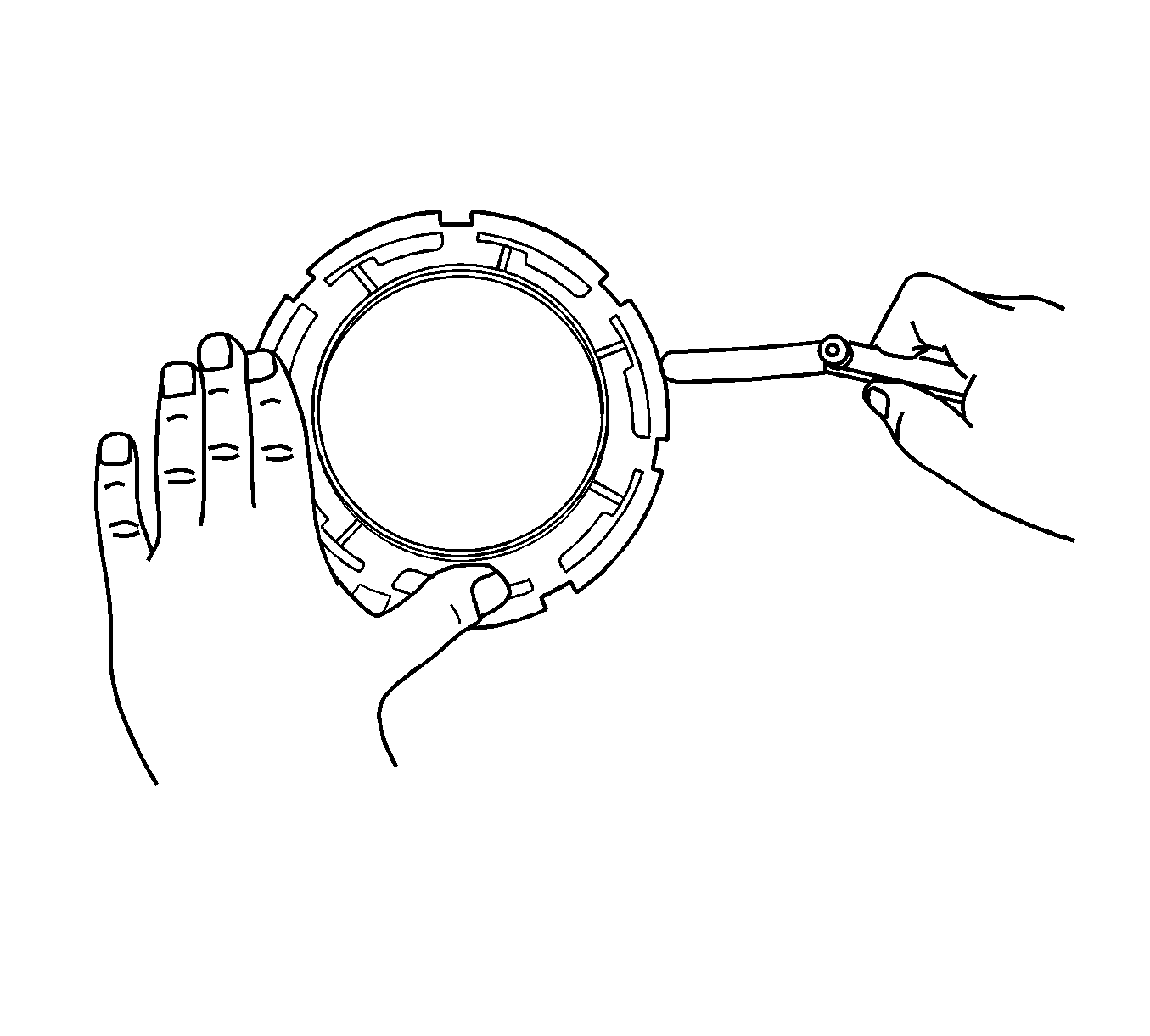
Important: Some lock ring were manufactured with DO NOT REUSE stamped into them. These lock rings may be reused if they are not damaged or warped.
Important: Inspect the lock ring for damage due to improper removal or installation procedures. If damage is found, install a NEW lock ring.
Important: Check the lock ring for flatness.
Installation Procedure
- Clean any contamination from the male pipe ends of the fuel tank module.
- Place the new fuel tank module seal (1) on the fuel tank.
- Complete the following in order to install the fuel tank module (2) into the fuel tank (4):
- Press the fuel tank module downward, aligning the tang (1) with the notch (2) in the fuel tank.
- Position the cam lock ring to the fuel tank
- Use the J 45722 in order to install the fuel sender lock ring. Turn the fuel sender lock ring in a clockwise direction.
- Refer to Plastic Collar Quick Connect Fitting Service in order to connect the following to the fuel tank module (2):
- Install the fuel tank. Refer to Fuel Tank Replacement .
Caution: In order to reduce the risk of fire and personal injury that may result from a fuel leak, always replace the fuel sender gasket when reinstalling the fuel sender assembly.

| 3.1. | Insert the module (2) into the fuel tank allowing the fuel level sensor arm and float (3) to clear module opening. |
| 3.2. | Lower the module (2) downward into the fuel tank (4). |
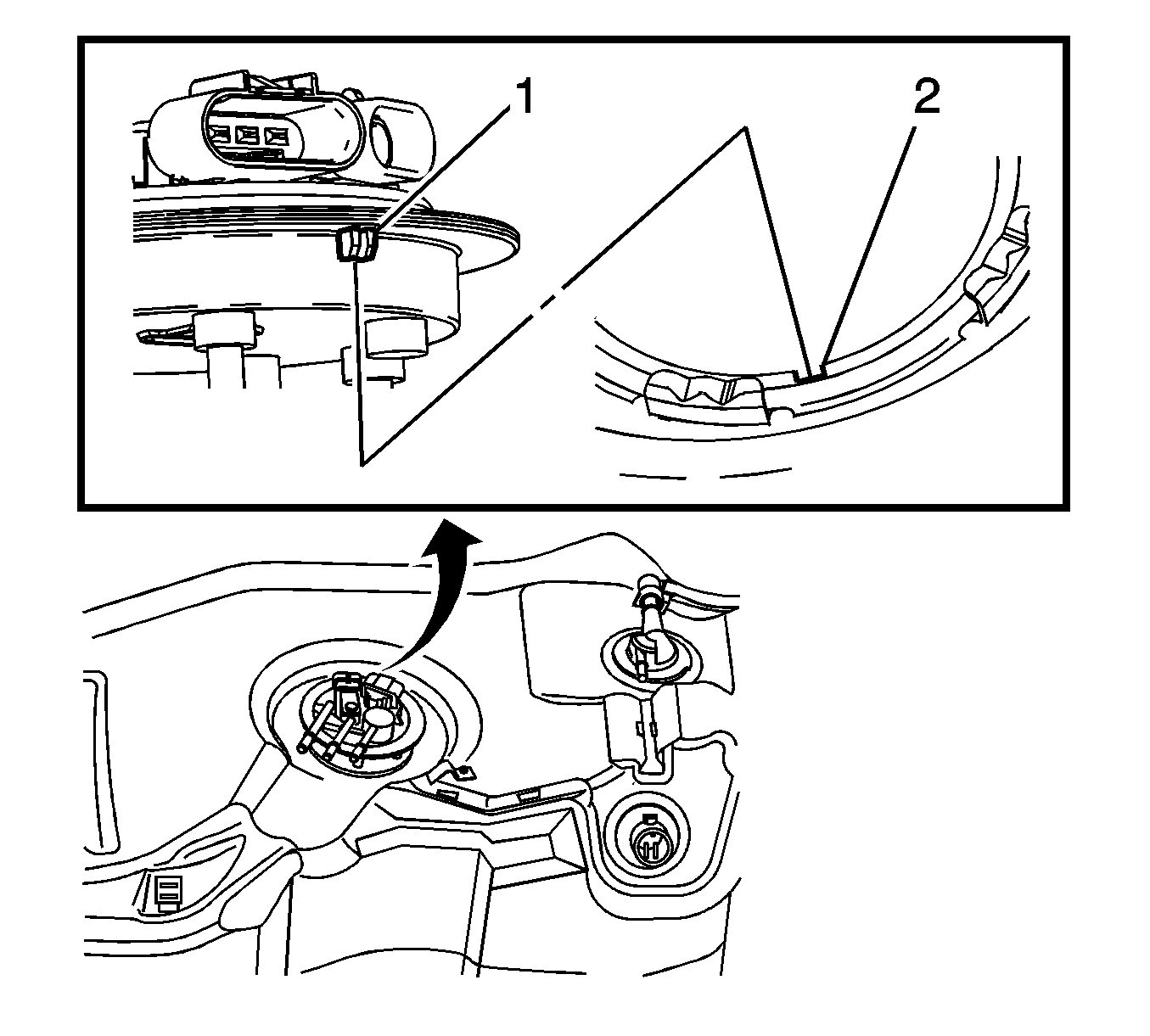

Important: Always replace the fuel sender seal when installing the fuel sender assembly. Replace the lock ring if necessary. Do not apply any type of lubrication in the seal groove.
Ensure the lock ring is installed with the correct side facing upward. A correctly installed lock ring will only turn in a clockwise direction.
| • | The evaporative emission (EVAP) pipe (5) |
| • | The fuel return pipe (6) |
| • | The fuel feed pipe (7) |
